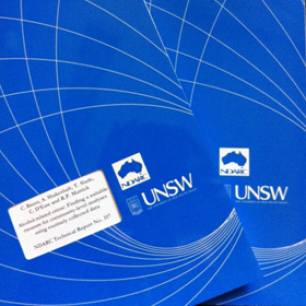NDARC Monograph No. 48 (2002)
The Illicit Drug Reporting System (IDRS) is an ongoing illicit drug monitoring system funded by the Commonwealth Department of Health and Ageing (CDHA) that has been conducted on an annual basis in NSW since 1996, and in all states and territories of Australia since 1999. The purpose of the IDRS is to provide a coordinated approach to monitoring the use of illicit drugs, in particular, heroin, amphetamine, cocaine and cannabis. It is intended to serve as a strategic early warning system, identifying emerging trends of local and national concern in various illicit drug markets. The study is designed to be sensitive to such trends, providing data in a timely fashion, rather than to describe the phenomena in detail, such that it will provide direction for more detailed data collection on specific issues.
The complete IDRS methodology consists of three components: (1) interviews with injecting drug users (IDU); (2) interviews with key informants (KIS) who, through the nature of their work, have regular contact with illicit drug users; and (3) an examination of extant data sources related to illicit drug use, such as National Household Survey data on drug use, opioid overdose data, purity of seizures of illicit drugs made by law enforcement agencies, and so on. These three data sources are triangulated against each other in order to minimise the biases and weaknesses inherent in each one, and to ensure that only valid emerging trends are documented.
The complete IDRS was trialled in NSW in 1996, and was expanded to include SA and VIC in 1997. In 1999, the complete IDRS was conducted in the same three jurisdictions, while a ‘core’ IDRS, consisting of key informant interviews and examination of extant indicator data sources, was conducted in all other jurisdictions. In 2000 and 2001, with additional funding provided by the National Drug Law Enforcement Research Fund (NDLERF), the complete IDRS was conducted in all jurisdictions. This is a significant advance on previous years, as 2000 and 2001 represent the first two years in which standardised, directly comparable data relating to illicit drug use and markets have been collected in all jurisdictions. The Australian Drug Trends 2001 report presents a summary of these findings.
Detailed reports describing drug trends in each jurisdiction can be obtained from the National Drug and Alcohol Research Centre. Also available are reports presenting the results of a two year trial of the feasibility of adding ecstasy and other party drugs to the list of drug classes monitored by the IDRS (Longo, Humeniuk, Christie, Topp & Ali, 2002; Topp, Breen, Kaye & Darke, 2002). Results pertaining to ecstasy are not presented in the present report.


